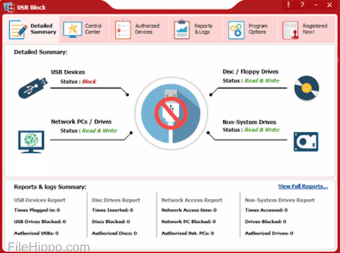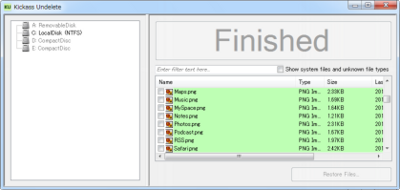
- Usb block 64 bit kickass how to#
- Usb block 64 bit kickass drivers#
- Usb block 64 bit kickass code#
- Usb block 64 bit kickass Pc#
Then I check if my FIRQ handler fired or not. I enable the FIRQ interrupt, wait a few cycles and disable the FIRQ. In SiMon6809 monitor code, I actually do a trick.
Usb block 64 bit kickass code#
This means this code can not just check if there is a byte waiting or not. 6809 will wait for the interrupt to occur). The problem with the above code is SYNC blocks the processor (i.e.
Usb block 64 bit kickass how to#
Here is an example of how to read character and echo it back to the PC: ECHO ORCC #%0100_0000 # Disable FIRQ interrupt Memory is precious and FT245RL already has a FIFO in it, so I don’t see any good reason to keep a second FIFO in SiMon6809. Then you can implement getc() and putc() type functions to access this FIFO in a controlled way.

If you choose the FIRQ handler solution, the handler should receive each byte and put it in a FIFO in the RAM.
Usb block 64 bit kickass Pc#
Usb block 64 bit kickass drivers#
Unlike other designs where a ACIA (serial port) is used, the communication link on SiMon6809 is very fast.Īfter installing the drivers on the host PC, SiMon 6809 will showup as a Virtual COM port. Also, it will transfer data at ~300kBytes/sec. It has 256 bytes of receive buffer and 128 bytes of transmit buffer. SW Memory Map 0x0000 - 0x7FFF : System RAM (32K)Ġx8000 - 0x9FFF : (Optional 2nd 8K EEPROM or RAM or I/O)Ġ圎000 - 0xFFFF : System EEPROM (includes monitor + assembler)įT245R is a single chip USB to parallel FIFO bidirectional data transfer interface chip.

My goal with SiMon6809 is to build a simple computer that will let you experience 6809.

Unfortunately, 6809 came in little bit late the world moved onto true 16-bit processors (like 680) and 6809 was forgotten. It was fundamentally an 8-bit processor, but it had some support for high level languages and 16-bit operations, i.e. Those of us who coded on Commodore 64, will remember the underground competition about trying to come up with the best demos.Īt the end of that era, Motorola designed the most powerful micro, 6809. Most of us spent hours coding in assembly, doing all sorts of tricks with about several kBytes(note k!) of memory and simple 8-bit move/add/subtract instructions. Check out RetroShield for Arduino instead.īack in the days of Apple I/II and Commodand its derivatives were the most popular 8-bit microprocesor chips. This project is retired and shown for educational value. If you never used an 8-bit processor, you can use SiMon6809 to go back in time.

If you coded on 8-bit processors, you will remember the good-ol' days. SiMon6809 is a 6809 based educational computer.


 0 kommentar(er)
0 kommentar(er)
